Indoor gardening offers a refreshing break from traditional outdoor gardening by bringing the joy and benefits of plants right into your living space. An indoor garden doesn’t just spruce up your home decor, it actually boosts your well-being too. Studies show that spending time with plants might lower stress levels and enhance your mood. Who wouldn’t want a hobby that does that?
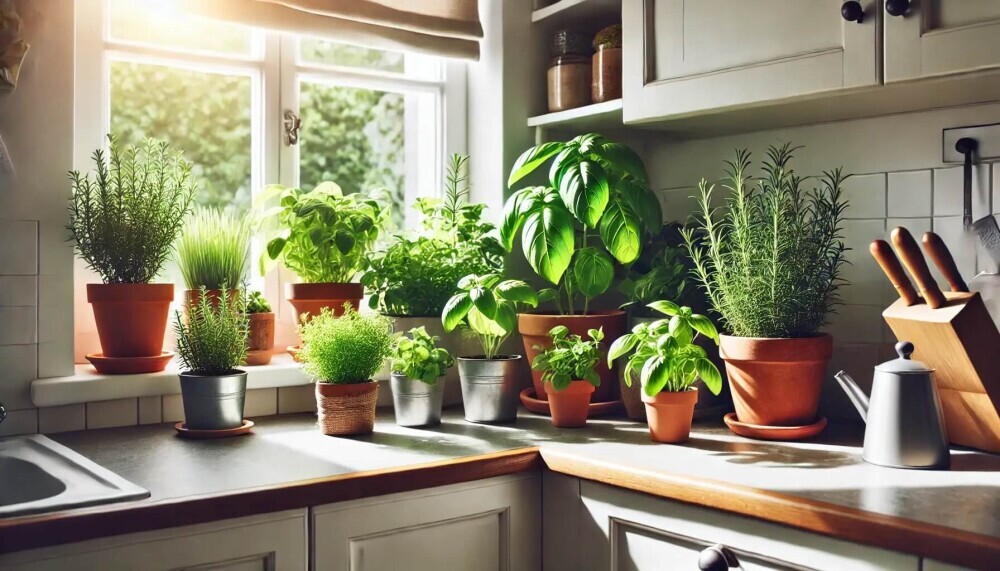
Table of Contents
Plants indoors can help optimize space, especially if you’re living in an apartment or don’t have the luxury of a backyard. Whether it’s a compact herb garden in your kitchen or some lush greenery in your living room, there’s always a way to fit some plants in. Getting creative with your space layout can lead to some pretty impressive setups. Honestly, you’d be surprised how much you can grow with so little space.
Starting an indoor garden is a great way to dip your toes into sustainable living. Imagine plucking fresh herbs right from your countertop or growing your own salad greens. It’s satisfying and environmentally friendly as it cuts down on the plastic packaging that comes with store-bought produce. It’s a little step towards a reduced carbon footprint, plus the produce is as fresh as it gets!
Choosing the Right Indoor Plants

Picking the right plants is key for a thriving indoor garden, especially when you’re just getting started. Not all plants are suited for life indoors, so it’s important to choose those that can adapt well. Consider your home’s climate and lighting conditions when making your selection. Plants like snake plants and pothos thrive in lower light, while succulents and cacti prefer brighter spots.
Plant variety makes indoor gardening exciting. From lush ferns to aromatic herbs, there’s a wide range to choose from. When starting out, go for low-maintenance options—succulents and herbs are fantastic picks for beginners. Not only are they easy to care for, but they also add a nice touch to your decor and are practical too.
It’s crucial to know that every plant has its own set of needs. Some might need frequent watering, while others are more drought-tolerant. Learning these needs will help prevent overwatering or neglect. Plus, matching your plant choice with your lifestyle, like time available for care, will set you up for success.
Lastly, consider the growth habit of your plants. Some grow tall and some love to trail. Decide where your plants will live in your home and pick ones that suit both the space and your style. With so many options available, it’s easy to create an indoor garden that reflects your personality and brightens your space.
Essential Tools and Supplies for Indoor Gardening
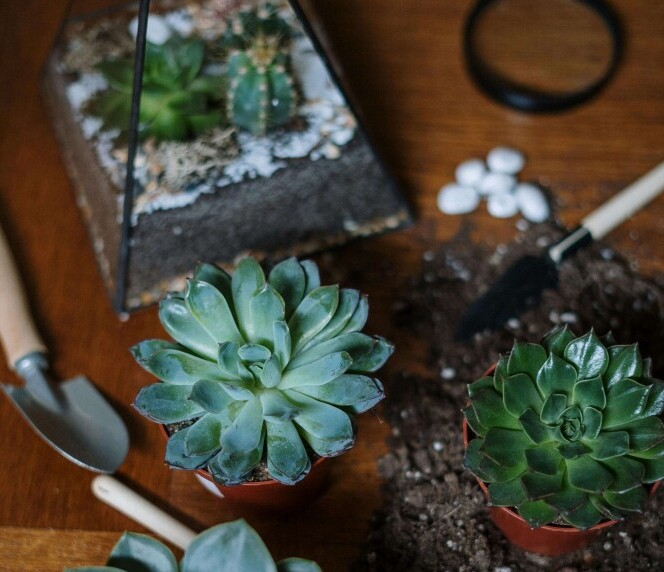
Getting started with indoor gardening doesn’t require a ton of complex equipment, but having a few basics can make a big difference. Start with tools like a good pair of gardening gloves, a set of small pruning shears, and a watering can with a narrow spout for precision. These are pretty much your go-tos for taking care of your plants with ease.
Choosing the right pots is just as important. Ensure they have drainage holes unless you’re into mastering the art of careful watering. Ceramic, plastic, or fabric pots all have their perks, so pick what works for your vibe and plant needs. Remember, style and function can go hand in hand.
Let’s not overlook soil. Indoor plants thrive best in quality soil that’s appropriate for their type. Potting mix specifically formulated for indoor plants usually works wonders. And if you’re getting adventurous, try mixing in materials like perlite or vermiculite to improve drainage and aeration.
Fertilizers are your plants’ best friends when it comes to nutrients. Plenty of options exist, from liquid blends to slow-release pellets. Organic fertilizers bring a natural touch and work great for many indoor setups. Just go easy; you don’t want to overfeed and stress your plants out.
If you’re eco-conscious or on a tight budget, there are plenty of sustainable and affordable options on the market. From recycled pots to organic soil, small choices can contribute to a greener lifestyle while keeping your costs in check. It’s all about finding the balance between caring for your plants and the planet.
Creating the Perfect Indoor Environment
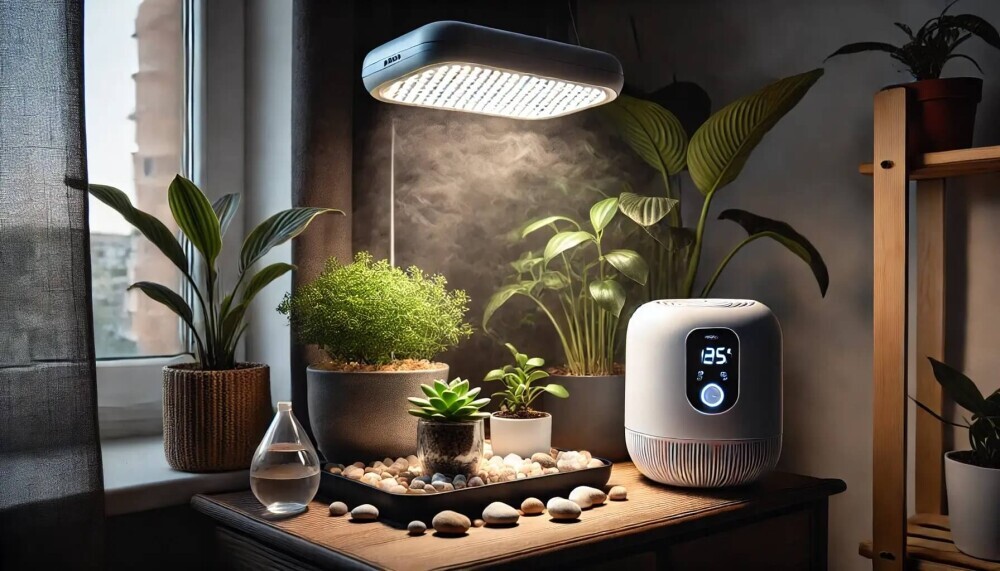
The right environment is crucial for any plant’s health and happiness indoors. Light, temperature, and humidity are the big three you’ll want to manage for your green friends. Even if your space doesn’t get a lot of natural light, don’t fret. LED grow lights are a great solution, mimicking the sun’s rays and keeping your plants thriving.
Temperature needs can vary from plant to plant, but most indoor varieties do well in comfortable room temperatures. Watch out for drafts or heat sources like radiators that can mess with their environment. Keeping them away from windows on chilly nights or overly sunny spots is often a good move to maintain consistent conditions.
Humidity is another factor. While some plants enjoy a humid setting, others prefer a drier atmosphere. Misting plants occasionally or using a pebble tray can increase humidity without making much fuss. Humidifiers are a handy all-around solution, especially in dry climates.
Indoor gardens come with their own set of challenges. Pests and diseases can pop up and wreak havoc. Regular checks go a long way in catching these problems early. Keep an eye out for discolored leaves or any unusual spots. Natural remedies are often effective first steps, like neem oil for bug control or just giving a plant a good rinse.
Adjustments to the environment might be needed as seasons change. Being proactive with these tweaks helps ensure your indoor garden remains a lush and healthy slice of nature inside your four walls.
Setting Up Your Indoor Garden Space
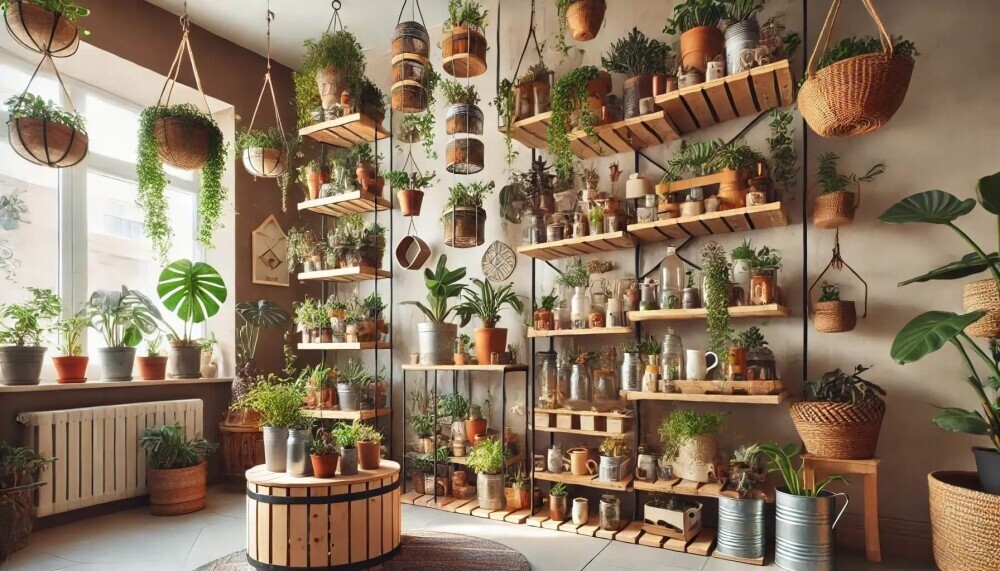
Organizing your indoor garden space is all about creativity and making the most of what you have. Vertical gardening is a great option for tight spaces, allowing you to stack plants in layers without monopolizing your floor space. Hanging planters or wall-mounted pots can take your greenery to new heights, literally.
Besides going vertical, think about using window sills, shelving, or any unused corners. These spots can transform into lively green areas with the right approach. Consider getting crafty with DIY projects like repurposing old containers or building custom plant stands to suit your style and space.
Containers are important, too. From traditional pots to quirky options like teacups or mason jars, there’s no shortage of ways to display your plants. Just ensure drainage is covered to prevent waterlogged roots, which are a frequent downfall in indoor gardening.
Personalizing your garden area makes it feel more like your space. Use themed pots, colorful planters, or decorate surroundings to reflect your personality. This gives your garden character and makes it a true extension of your living area.
Balancing aesthetics with practicality can make your indoor garden not only a feast for the eyes but a functional addition to your home. With careful planning and a touch of creativity, you can craft a green oasis regardless of the size of your space.
Planting and Potting Basics
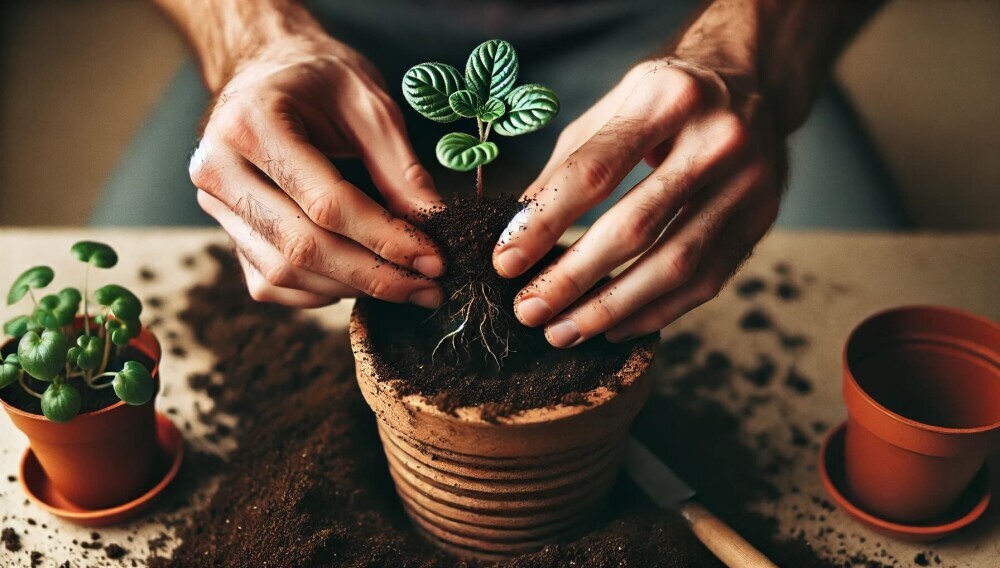
Diving into planting and potting your indoor garden is a crucial step and can be pretty straightforward once you know the basics. First, decide whether to start from seeds or seedlings. Seeds can be rewarding as you see them sprout and grow over time, while seedlings offer a head start and can be less daunting for beginners.
When potting, it’s all about creating a happy home for your plant. Start with a pot that’s the right size—not too big and not too small—and make sure it has good drainage to keep roots healthy and rot-free. Potting mixes tailored for indoor plants often contain the right blend of materials, like peat, perlite, or sand, ensuring proper drainage and nutrient availability.
The actual process of potting involves gently transferring either seeds or seedlings into the prepared potting mix. If you’re working with seedlings, make sure to lightly loosen the soil around the roots before placing them in their new home—this helps the roots settle better.
When sowing seeds, follow the packet instructions regarding depth and spacing. Cover them lightly with soil, as some seeds need light to germinate. A gentle misting or light watering helps settle the soil without washing it away or upsetting your delicate seeds or seedlings.
Maintaining the right moisture level is key to successful potting. The soil should be damp but never soggy. Using a spray bottle is a good way to ensure even, gentle watering for fresh seeds and seedlings. Gradually, as plants establish, regular watering techniques can be adopted.
Potting doesn’t end with the first setup. Transplanting might be necessary as plants outgrow their pots. Keep an eye on the root system; when roots circle around the bottom of the pot, it’s time to move to a new, roomier container. These little transitions support healthy growth and keep your indoor garden flourishing.
Watering and Maintenance
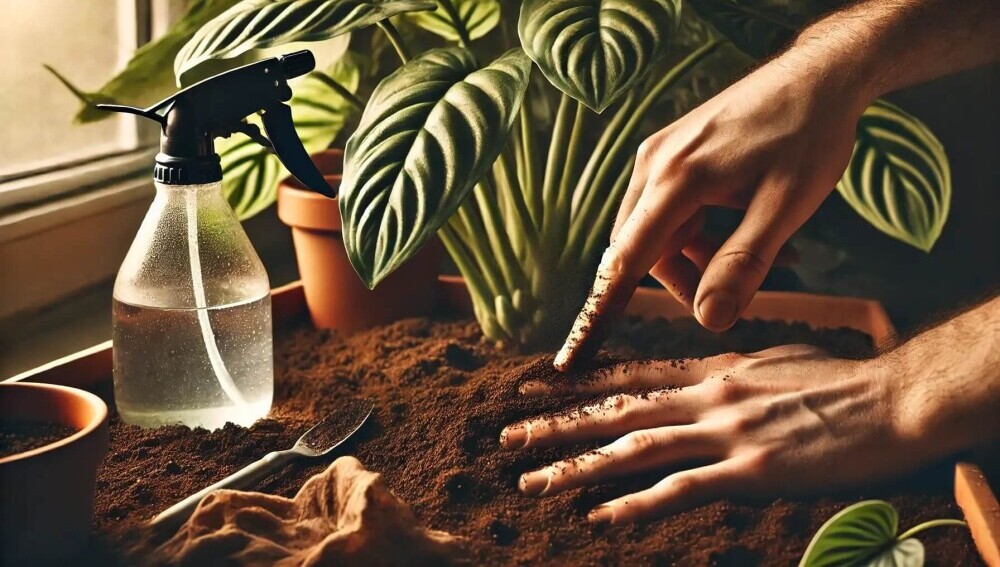
Keeping your indoor plants well-watered is a bit of an art that requires understanding each plant’s specific needs. Creating a consistent watering schedule is helpful, but remember every plant is unique. Some thrive on more frequent waterings, while others might prefer their soil to dry out between waterings.
A good strategy is to check soil moisture before making any watering decisions. Stick your finger about an inch into the soil; if it feels dry, it might be time to water. Conversely, if it’s still damp, hold off for a bit. This simple habit can prevent a lot of overwatering mishaps, which are more common than one might think.
Signs of overwatering include yellowing leaves and root rot, while wilting or dry soil can indicate underwatering. Catching these signs early can save your plant. It’s all about maintaining balance and being observant of your plant’s health cues.
Regular maintenance goes beyond watering. Pruning is equally important for overall plant health, especially for those with bushy growth habits. Snipping off dead or damaged leaves encourages new growth and helps prevent the spread of potential diseases.
A weekly check-up to clean leaves from dust is also beneficial, as dust can block light and reduce photosynthesis. Simply wiping leaves with a damp cloth keeps them clean and healthy looking. Don’t forget to rotate your plants occasionally. This ensures even exposure to light, helping them grow evenly and prevent reaching or leaning.
Proper watering and maintenance not only keep your plants alive but thriving. Observance and adjustments make all the difference, allowing your indoor garden to stay lush and vibrant.
Harvesting and Enjoying the Bounty
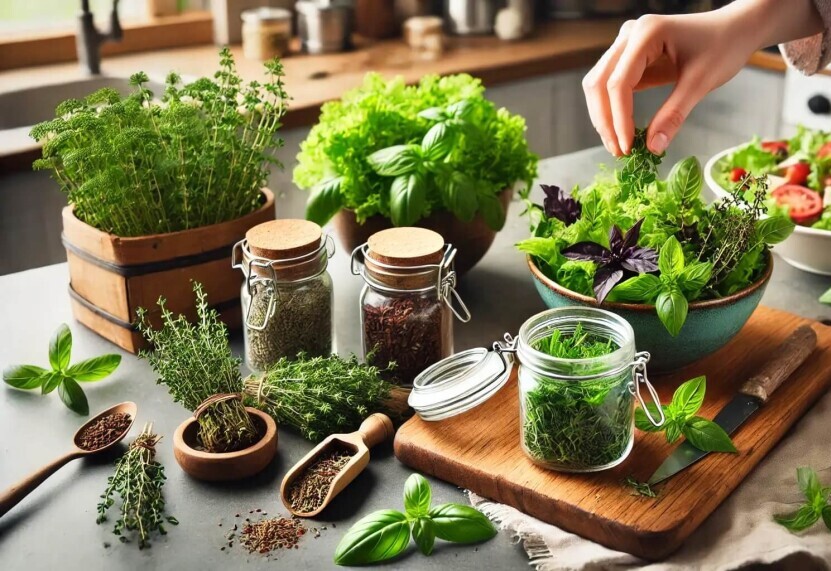
Reaching the point where you can harvest your indoor garden’s produce is both rewarding and exciting. For many herbs and vegetables, timing is crucial. Harvesting at the right time ensures the best flavor and texture, particularly for tender greens and aromatic herbs.
Knowing when to pick your plants is often a matter of eyeing for color, size, and maturity. Herbs like basil or cilantro can be trimmed regularly, which encourages more growth. For leafy greens, a general rule is to pick them when the leaves are still young and tender for the best taste.
Once you’ve gathered your produce, using them fresh in your cooking brings the garden’s goodness straight to your kitchen. Toss freshly picked herbs into your meals or whip them up into special teas or infusions. Their flavor easily beats anything store-bought, plus they pack more nutrients.
If you find yourself with an abundance, preserving your harvest is a smart move. Drying herbs, freezing them, or turning them into homemade oils and butters extends their shelf life and enjoyability. Imagine having your home-grown flavors year-round without worrying about spoilage.
Storing your harvest properly is key to retaining its flavor and freshness. Most herbs do well when washed, dried, and stored in airtight containers. Freezing is also a viable option, especially for those herbs that don’t dry well.
Reaping the benefits of your hard work is both satisfying and practical. You’ll not only enjoy the taste but the fact that you grew it all from your own home. It’s a real taste of achievement and a step towards a more self-sustaining lifestyle.
Overcoming Challenges and Expanding Your Indoor Garden
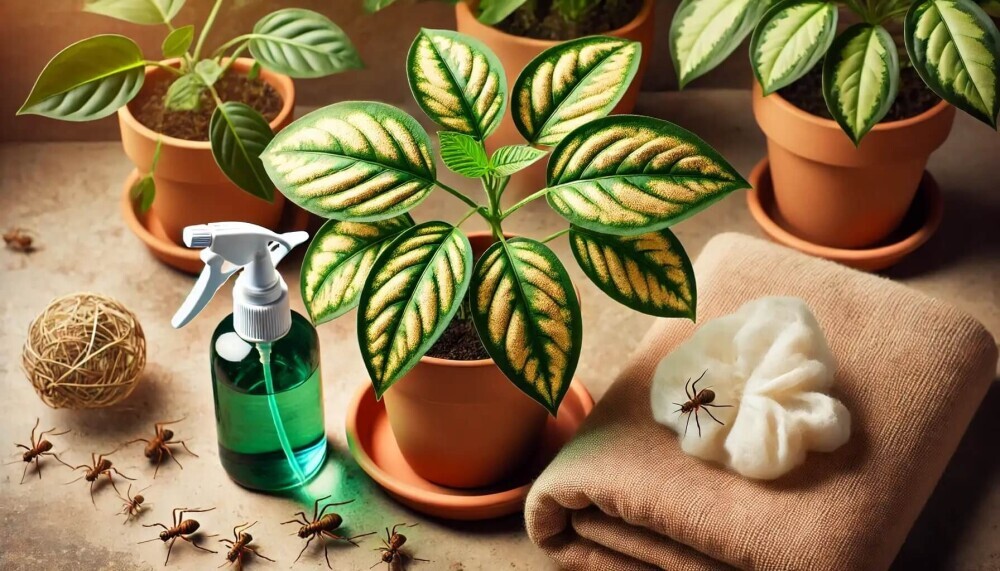
Indoor gardening can sometimes throw a challenge or two your way, but the rewards far outweigh these bumps. Common problems like pests, yellowing leaves, or slow growth often have straightforward solutions once you know what to look for. Keeping a close eye on your plants’ health and acting quickly is key.
One effective remedy for pests is using natural solutions such as neem oil, which works well against most common indoor plant bugs. Additionally, keeping your plants clean and maintaining proper air circulation can prevent many issues from the get-go.
Another challenge gardeners face is balancing light and water needs, especially as seasons change. Adjusting plant positions to catch more natural light or tweaking your watering schedule can make a huge difference. It’s all about responding to environmental factors and learning from what each plant needs best.
For those looking to level up their gardening game, exploring advanced techniques like hydroponics or aquaponics can be intriguing. These soil-less methods offer an efficient way to grow plants indoors and can be particularly rewarding once mastered.
Expanding your indoor garden is often the natural next step after gaining confidence and skill. You might start with just a few more plants or get adventurous with new varieties and systems. Adding diversity not only enhances the beauty of your garden but also provides you with a rich gardening experience.
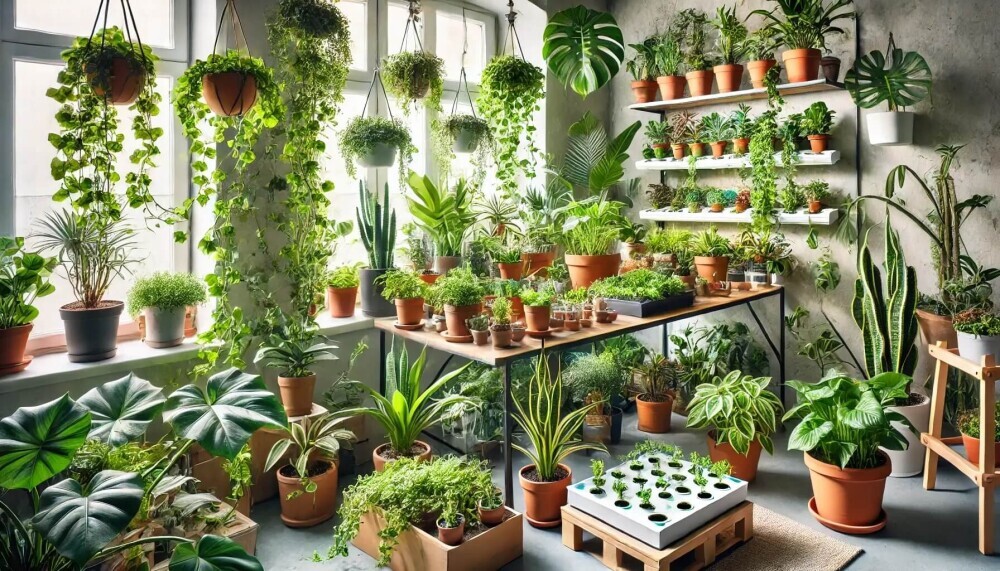
As your indoor garden grows, so will your knowledge of plant care. Tackling new plant types and gardening methods keeps things fresh and continuously develops your skills. Plus, sharing your green success with friends and family might inspire them to start their own plant journey!
